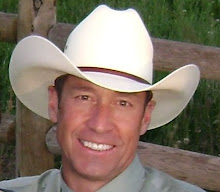By Randall Holman
A major part of a horse's diet is hay or pasture. A horse weighing 1000 pounds will eat about 500 pounds each month. A horse needs roughly 28 acres of non-irrigated, dryland pasture a year if that is the only source of forage. However, a pasture that is irrigated will grow more forage than dryland pasture, requiring less acreage. The amount of irrigated pasture needed for one horse is roughly 1 to 2 acres.Two acres of pasture for each horse are recommended. One acre of pasture will provide adequate grazing, but requires more pasture management. Manage your pasture as you would with any crop with soil testing, fertilizing, and managing manure. Horses will not eat trampled grass or grass with manure on it. Horses will also overgraze smaller areas very quickly. Therefore, a combination of pasture and small lot or barn is needed to help minimize overgrazing.Do not let horses overgraze the pasture as this can cause grass to no longer grow. Keep pasture grass healthy--overgrazed pasture may never recover. To allow for re-growth, leave about 1/3 of the grass uneaten at any given time. The horse can be confined to the lot or barn and only allowed to graze for a few hours a day, reducing damage to a small pasture. Rotational pasture lots are one key to using small acreage pasture space to the fullest potential. Portable electric fencing provides an efficient and economic way to partition you pasture. Over-supplementing your horse with hay and grain will not prevent your horse from overgrazing.Pasture grazing is not absolutely necessary for a horse. A nice green pasture is not always a reality. Horses can be properly fed without pasture. However, pasture has several advantages as it is the natural feed for horses, reduces the cost of feeding, provides your horse with exercise, and generally speaking, horses are usually healthier when kept outside on pasture. Establishing and maintaining a productive pasture is not too difficult. A few dollars spent on soil nutrients for your pasture is a good investment. Fertilizer will help your pasture to become more productive and produce more forage. Fertilizer costs will generally be offset from good pasture rotating and from savings in feed costs for hay and grain supplements. Mowing is also important of pasture management. It minimizes the spread of weeds to help maintain higher quality forage. Mowing weeds before seed heads are produced limits the spread of weeds. Grass should be mowed to 3-4 inches.No matter how well you manage your pasture, it will most likely thin. To help ensure pasture continues to produce good grass, new forage seed should be spread every year. It is recommended re-seeding be done in the spring or fall. In the spring, wet conditions will allow for germination and growth, but only if it is not too wet or muddy. In the fall, there will be less competition from weeds. Grazing should not be allowed on new grass seedlings for approximately 6 to 8 weeks after emerging from the ground to allow for proper root growth.Caution! Turning your horse out on green lush pasture before conditioning him to a change in diet is dangerous and can result in sickness or possibly death. Start your horse out slowly by letting him graze for few minutes each day and gradually increase to a few hours each day. About the Author Randall Holman, site owner of Front Range Frenzy and horse enthusiast, is the author of this article. You will find other easy and practical basic horse care information on his website: http://www.FrontRangeFrenzy.com.
Tuesday, January 26, 2010
Dryland Forage Establishment
Establishing dryland pasture grasses is often tricky. It’s really a matter of timing; getting the seed into the ground at the right depth at the right time to take advantage of spring rain or snowmelt. In the mountain west, dryland grasses can be planted either in the fall or spring. If you choose to plant in the fall, ensure that the temperatures have cooled to below 40 degrees F to prevent seed germination too soon. The idea is to get the seed in before the snow falls, and take advantage of moisture from the spring thaw to hydrate the seeds for germination. If you plan to plant in the spring, it’s best to pick a time after spring thaw and before early summer. Summer in the mountain west often finds dry periods in June and July, depending on your area. If grasses are planted too late they may not have enough moisture to get established. For best results coincide your plantings with spring rains.
Dryland grasses can be directly seeded into the soil by seed drilling. This is often the preferred method in the spring as tillage quickly depletes soil moisture and organic matter. Fall tillage and planting would be appropriate if winter snow supplies moisture for soil hydration and seed germination in the spring.
Dryland grasses can be directly seeded into the soil by seed drilling. This is often the preferred method in the spring as tillage quickly depletes soil moisture and organic matter. Fall tillage and planting would be appropriate if winter snow supplies moisture for soil hydration and seed germination in the spring.
Tuesday, January 12, 2010
The 'Best' of Grass!
Featured this week, while the weather is cold outside and staying inside sounds good, are the smooth pipes of Tom Jones and Joan Baez each performing a rendition of "The Green Green Grass of Home."
Tuesday, January 5, 2010
Wow! It is times like these that make me feel proud to be a graduate of Boise State University. Last night, the Broncos were able to capitalized on an early game turnover. The momentum was established and the Broncos were savvy enough to maintain the advantage till the last seconds of the game were another turnover sealed the 2010 Fiesta bowl. Good job Broncos and coach Peterson! Proud to be a Bronco!
Subscribe to:
Comments (Atom)




